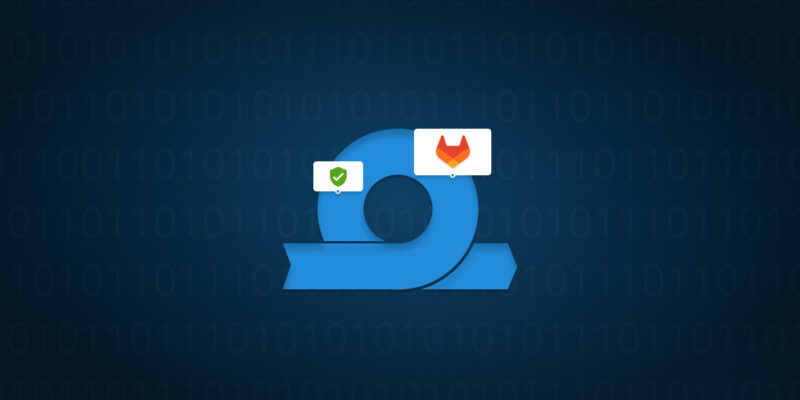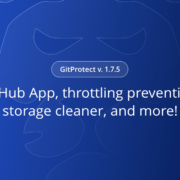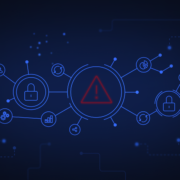
Secure and Compliant CI/CD Pipelines with GitLab
1. CI/CD pipelines are everywhere
In today’s fast-paced software development world, seamless, secure, and compliant CI/CD pipelines are critical for success. However, managing multiple tools and processes across development teams using traditional CI/CD solutions can lead to security vulnerabilities, compliance roadblocks, and hinder overall software delivery.
One of the primary concerns is the proliferation of heterogeneous CI/CD pipelines across development teams. This fragmentation leads to a significant accumulation of technical debt over time. With each project adopting its own set of tools and processes, maintaining consistency becomes a Herculean task. This not only hampers productivity but also increases the risk of errors and inefficiencies, ultimately impacting the quality and timeliness of software delivery.
With the rise of supply chain attacks, where malicious actors target vulnerabilities in third-party dependencies, the stakes are higher than ever. A single breach or compliance violation can destroy an organization’s reputation and result in significant financial losses.
2. Software company challenges
Ensuring the integrity and security of CI/CD pipeline code is paramount due to its pivotal role as the backbone of software delivery. CI/CD pipelines are not merely tools for automating the build, test, and deployment processes; they are the conduits through which critical information flows, shaping the entire software delivery lifecycle. Here’s why it’s essential to check the CI/CD pipeline code with the same rigor as the application code:
- Critical Functionality: CI/CD pipelines orchestrate the entire software delivery process, from source code management to deployment. Any vulnerabilities or errors in the pipeline code can disrupt this flow, leading to failed builds, erroneous deployments, or even security breaches. Therefore, ensuring the correctness and reliability of pipeline code is essential to maintain the stability and efficiency of the delivery pipeline.
- Access to Sensitive Information: CI/CD pipelines often require access to sensitive information such as credentials, API keys, or deployment configurations. This information is typically stored within the pipeline code or accessed during the execution of pipeline stages. If the pipeline code is not adequately secured, it becomes susceptible to unauthorized access or leakage, posing significant security risks to the organization.
- Impact on Compliance: In regulated industries or environments where compliance is critical, ensuring the integrity of CI/CD pipeline code is essential. Compliance frameworks regularly mandate strict controls over the software delivery process, including the code used in CI/CD pipelines. Failure to adhere to these standards can result in compliance violations, legal repercussions, and reputational damage.
- Propagation of Vulnerabilities: Just like application code, pipeline code can contain vulnerabilities that could be exploited by malicious actors. These vulnerabilities may arise due to coding errors, insecure configurations, or outdated dependencies. If left unchecked, these vulnerabilities can propagate throughout the pipeline, leading to security breaches or unauthorized access to critical systems and data.
- Continuous Improvement and Evolution: CI/CD pipelines are dynamic entities that evolve over time to adapt to changing requirements, technologies, and business needs. Regularly reviewing and updating pipeline code ensures that it remains aligned with best practices, incorporates security enhancements, and supports the organization’s evolving delivery processes.
The CI/CD pipeline code is not just a technical artifact; it’s the lifeline of software delivery, accessing critical information and orchestrating the entire deployment process. By treating pipeline code with the same level of scrutiny and diligence as application code, organizations can safeguard their delivery processes, mitigate security risks, and ensure compliance with regulatory requirements such as ISO 27001, SecNumCloud, SOC 2, and NIS 2.
3. Improve control, security, and compliancy within the growing CI/CD landscape
As the number of software (Git) projects increases in your GitLab, the complexity of ensuring security and compliance within CI/CD pipelines also increases. Manual efforts to monitor and fix vulnerabilities are necessary to avoid losing control, but they are time-consuming and also prone to human error.
How can we effectively regain control of our CI/CD pipelines and ensure the security of our software supply?
- Manual CI/CD Code Review: Implement a rigorous manual code review process for the CI/CD pipeline code. This involves thorough inspections by experienced developers to identify potential vulnerabilities, misconfigurations, and security flaws. While manual review offers a degree of assurance, it can be time-consuming and prone to human error.
- Periodic CI/CD Code Checking script: Implement a periodic script to analyze and validate the CI/CD pipeline code across all projects. This script would run at predefined intervals to scan the pipeline code repositories, identifying inconsistencies, vulnerabilities, and compliance issues. By enforcing regular checks, organizations can ensure that pipeline code remains compliant and aligned with security standards over time. However, managing and maintaining such scripts can be challenging, and there’s no guarantee that all projects will adhere to them consistently. This approach may result in fragmented compliance efforts and hinder the ability to achieve comprehensive understanding and compliance at scale.
- Activate Compliance Pipelines in GitLab ULTIMATE: If you benefit from GitLab ULTIMATE Licences, you can use compliance pipelines to ensure that specific pipelines are run in all projects in a group. Compliance pipelines are applied to projects through compliance frameworks.
While GitLab’s built-in compliance pipeline feature provides valuable tools for enhancing compliance within the software delivery lifecycle, it’s important to note that there are some potential drawbacks.
Organizations may encounter challenges in configuring and managing compliance pipelines across diverse projects and teams. Additionally, relying solely on automated compliance checks may not cover all aspects of compliance, potentially leading to oversight or false assurances.
Nevertheless, activating the GitLab compliance pipeline can significantly improve the overall compliance posture of the organization by ensuring that all code changes undergo rigorous compliance validation. This helps mitigate the risk of non-compliant deployments and fosters consistency, transparency, and accountability in compliance practices across the organization’s software delivery lifecycle.
- Use a specialized solution: Utilizing a solution like R2Devops, the industry-leading platform for CI/CD pipeline standardization and security, offers a tailored suite of features to tackle the specific challenges associated with securing and managing pipeline code. With real-time observation, automated vulnerability detection, and centralized control, the solution provides unmatched visibility and assurance.
R2Devops aims to foster collaboration among teams, preventing reinventing the wheel and redundant efforts in CI/CD pipelines. The solution allows companies to collaborate on their own standardized CI/CD component catalog, and ensure its distribution at scale, leveraging the power of InnerSource philosophy. These CI/CD components are easily usable via a user-friendly and Low-code GUI, enabling effortless creation of compliant CI/CD pipelines by default, for all team members.
Additionally, R2Devops provides interactive dashboards for CISOs, CTOs, and other stakeholders to monitor adoption rates, risk levels, and compliance drift. This ensures that CI/CD pipelines remain under control and aligned with organizational objectives.
R2Devops seamlessly integrates with all GitLab instances without requiring specific GitLab licenses, ensuring compliance adherence throughout the software development lifecycle for everyone. This integration enhances security practices, streamlines compliance efforts, and empowers developers to confidently deliver high-quality software.
4. Takeaway
In conclusion, as the complexity of managing CI/CD pipelines continues to increase, organizations are more focused than ever on achieving security and compliance. However, relying on manual processes with your teams to ensure pipeline security and compliance can be time-consuming, error-prone, and ultimately ineffective.
GitLab Compliance Pipeline is a potential solution for companies with the appropriate Licenses. Even though it doesn’t allow for comprehensive monitoring, it represents a significant initial step towards taking control over your CI/CD pipeline code.
R2Devops emerges as a game-changer in ensuring security and compliance within CI/CD pipelines. With an innovative approach leveraging InnerSource, standardization, and observability as key elements, R2Devops aims to prevent chaos and preempt the next supply chain attack within CI/CD pipelines.






